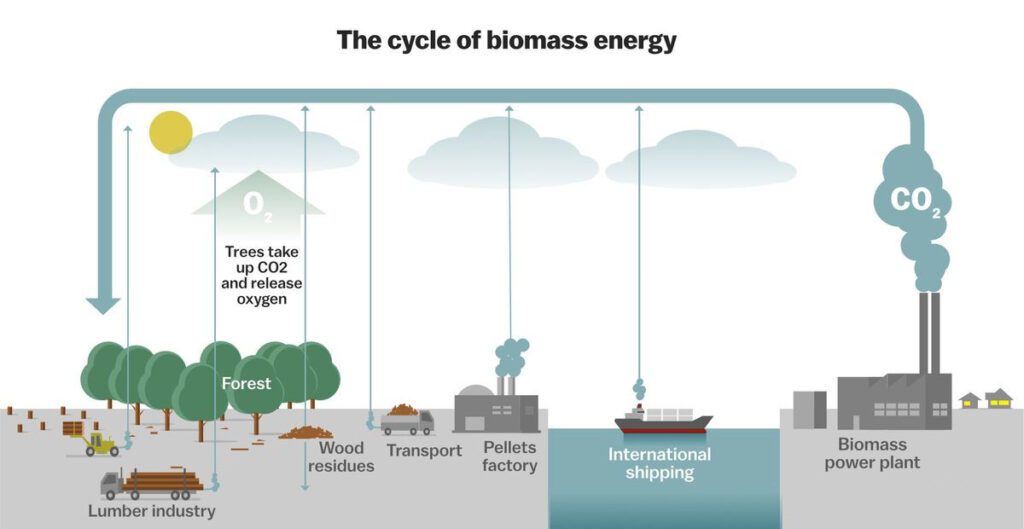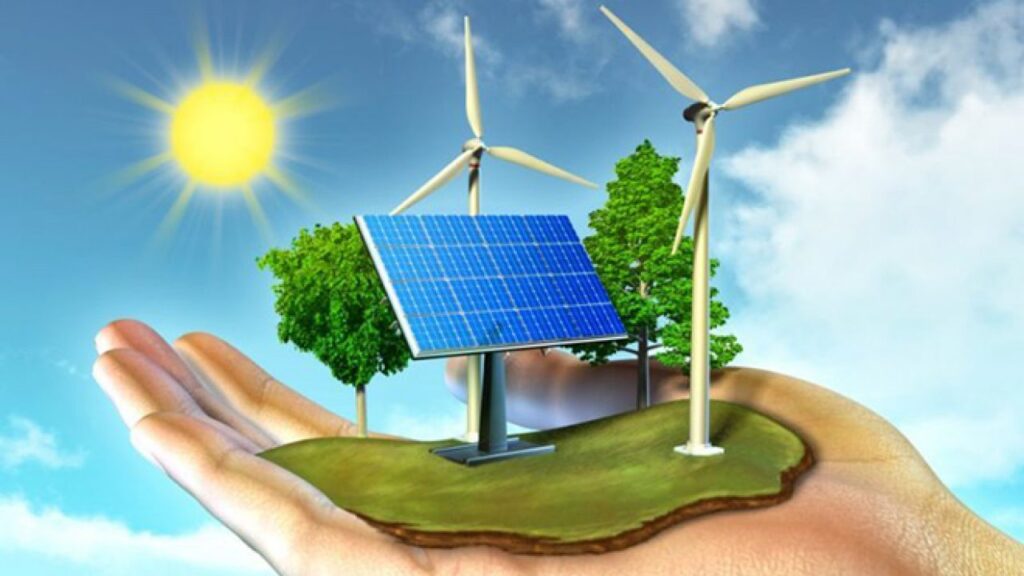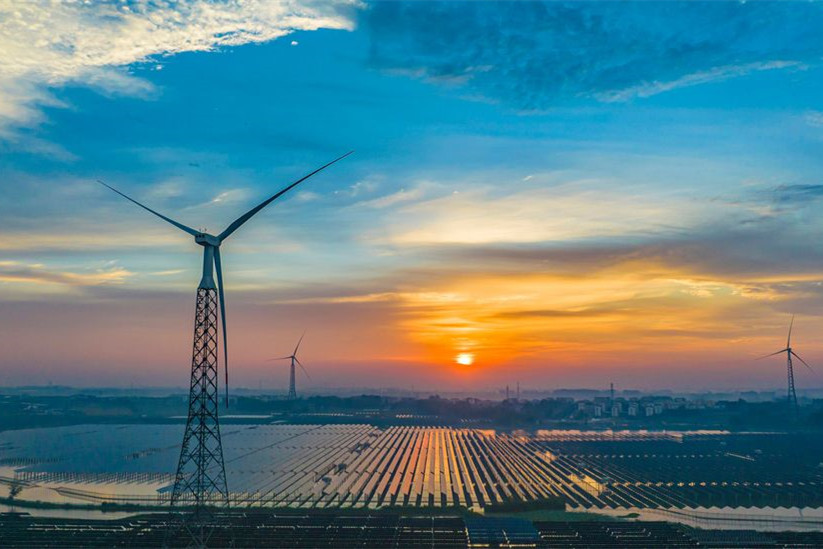- Natural gas, nuclear energy, wind, biomass, coal, solar energy boost the UK economy development.
- The UK government has carried out some policies and strategies. These strategies ensure the sustainable development and energy transition of the whole country.
- Technology and innovation is essential to the economic growth.
United kingdom is the world leading economy in the whole world. Energy is important to the growth of society especially electrical power. The UK seek the green transition of power including wind and solar power and nuclear energy to achieve the sustainable development as well as achieve net-zero emissions by 2050. The government in UK has already invested in severe technologies and carried out energy strategies to boost and renovate energy industry.
ACSR cable is commonly used in overhead power transmission and distribution lines, where it can span long distances and carry large amounts of electrical current. The steel core provides the cable with the necessary mechanical strength to support its own weight and the weight of the conductors, while the aluminum conductors provide high conductivity and low resistance to the flow of electricity.
Before we jump into the topic of technologies and energy strategies, it is necessary for us to have a clear picture of the energy in UK.
Sources of energy in the UK
United Kingdom is abundant with energy resources found within the countries. The most energy used up in the countries is from renewable resources. These sources include solar, wind, nuclear energy and biomass. The other sources of energy are from fossil fuels such as natural gas and coal. The government has issued commitments to reduce emissions after energy crisis in europe. These commitments are occurring as a result of the economic crisis across Europe. Pole bands work with other fittings that ensure there are no loose connections. The different sources of energy and their contributions are as discussed below:
Natural gas
Natural gas is the largest producer of energy and electricity generation in the UK. It accounts for more than 40% of the total energy produced. The natural gas is from the North Sea in the UK.
Nuclear power
Sizewell B, Hinkley Point C and Dungeness B are the main nuclear power plants in the UK. The nuclear energy contributes to more than 20% of UK’s electricity generation. Pole bands ensure that other devices are easility mounted on the transmission lines.
Wind
This is the fastest growing source of electricity in the UK. The wind power accounts for more than 20% of the total energy production in the UK. It has some of the largest wind farms in the world. These wind farms are in the London Array and the Walney Extension.
Biomass

This is the energy produced from organic materials such as wood, grass and crop materials. Biomass accounts for more than 7% of the total energy production.
Solar
Solar is the energy generated from the rays of the sun. the country has invested a lot in the solar industry in recent years. Solar accounts for about 5% of the total energy generated. The low availability of sunlight in the country limits the solar power production.
Coal
Although coal is being phased out, the contribution of coal has reduced over the last years. It now accounts for 2% of the total energy produced in the country. Pole bands work on steel, wood or concrete poles to make sure the connections are tight.
Technologies in the UK energy
The use of smart systems in the energy sector could lead to flexibility and energy cost reduction. New technologies and innovations lead to the fastened phasing out of fossil fuel use in the country. This will also help the government to tackle the climate changes by reducing greenhouse gas emissions. The smart technologies and innovations will allow the energy system to survive with the increased electricity demand from our homes and businesses. The smart technologies reduce energy costs and lead to more job opportunities. Pole line hardware ensure that the electric current flows through the main lines. This ensures smooth transmission of energy from production to consumption. The smart technologies and innovations adapted by the UK government include:
Heat network
The heat network projects are already under development in Gateshead and Milton Keynes. These projects supply citizens with affordable, low-carbon heat and electricity. This is through pairing with battery storage to offer excess electricity back to the grid.
Smart meters
Smart meters are combined with electric vehicle chargers and electricity from renewable sources of energy to save on costs. Pole line hardware is for preventing the loose connections making the devices to flow to the earth.
Battery technologies
These technologies have already been adapted in Oxford, Orkney and Perth in the UK. These technologies are helping the transition from fossil fuels to green energy. This is through delivering low-cost and low-carbon energy on demand. This provides reliable energy by transforming how the energy is stored within the battery.
Solar energy and battery technology

More than 6,500 residential customers across the UK are using domestic solar energy and battery technologies to forecast energy generation and demand in the electricity system. This enables the customers to trade excess energy to the grid and save on bills. Pole line hardware have high mechanical and tensile strength which prevents breaking and snapping.
The renewable energy chart for contributing the generation in electricity(2022)
| Renewable energy | contribution rate |
|---|---|
| Wind power | 28.6% |
| Biomass energy | 5.2% |
| Solar power | 4.4% |
| Hydro power | 1.8% |
UK’s Energy Security Strategy
The green transition movement around the world focuses in decarbonizing the energy sector. This reduces the production and release of the greenhouse gas emissions. Release of the greenhouse gas emissions harms the environment and atmosphere. This gas lead to climate change. The UK government proposes some strategies that speed up the UK. These strategies move towards a low-carbon and energy independent future. The strategies are after worries on affordability, security and sustainability of energy supply. Dead end clamps tighten the other devices installed on the overhead transmission lines. This connection ensures there are no loose connections that may lead to electrocution. The energy security and sustainability is from the global thwarts in oil prices. This is after the European Union and the G7 countries imposed a price cap on the Russian oil.
Policies in the energy security strategy
The strategies aim to reduce the dependence on Russian oil and coal for fuel in the UK. The policies focus on improving the countries domestic production of energy. Dead end clamps work with other fittings such as bolts, nuts and washers. These connections ensure the steady and secure connections of the overhead transmission lines. The policies are as discussed below:
- The government plans to further use the North Sea reserves.
- It plans on commissioning a scientific review of the extraction of shale gas.
- Plans to develop a carbon capture use and storage clusters by the years to come.
- It plans to reduce the consent times for offshore wind planning to one year.
- It also plans to impose a reduction in gas consumption by 2030.
FAQs
What are energy sources in UK?
Natural gas, nuclear energy, wind, biomass, coal, solar energy
What is ACSR cable?
ACSR stands for Aluminum Conductor Steel Reinforced cable. It is a type of high-tensile cable used for overhead power transmission and distribution systems.


